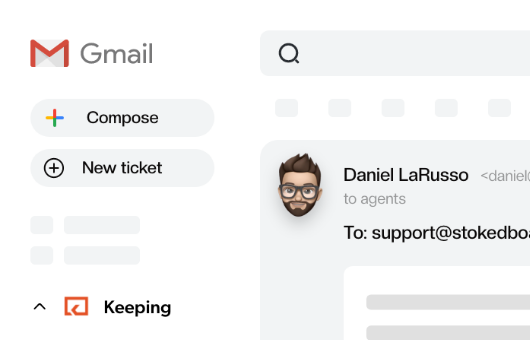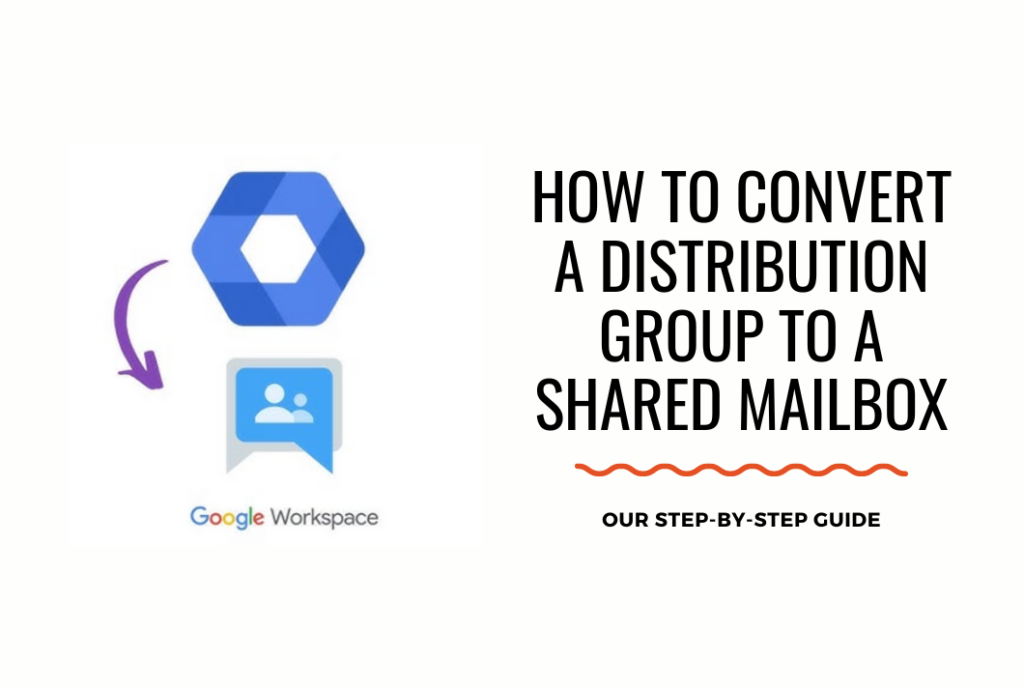
The Future of Customer Service
The future of customer service belongs to companies that combine AI and humans to provide excellent customer service solutions. New ideas will fill the customer service industry. We’ve compiled a list of future trends in customer support.
“The aggressive shift to digital and automated customer support has degraded the positive customer experience in recent years. Many companies, in order to cut operational costs, have become more dependent on outsourcing, AI chatbots, and machine learning.”, said Michele Santagata from Santagata Consulting,
But times have changed. Companies that shifted to customer support automation are regretting it now. Hyper-tech-based customer services have done more harm than good.
Recent studies have proved that 65% of customers are ready to change the brand after one bad customer service experience. Companies now realize that they have to:
- Prioritize the human element
- Show empathy toward customers
- Appreciate customer service agents
The future of customer service belongs to companies who combine AI and humans to provide excellent customer service solutions. New ideas will fill the customer service industry. We’ve compiled a list of future trends in customer support. Read up to find out the future of customer support.
Top Problems with the Customer Support Service
In the past few years, companies became ignorant of post-sale service. They focused on cost resilience and poured money into the sales departments. Customer acquisition crushed customer support. Here are the top problems that plagued the customer support industry:
- Sales over support: HR would look for talented sales personnel but don’t pay much heed to customer support people and hire them in bulk for call centers.
- Influence of AI and tech over human customer service: Companies replaced most customer service agents with chatbots who’d come at a lower price. The result? Customers would keep pushing buttons only to hear the same answer repeatedly.
- No investments to improve the customer support service: While the customer acquisition budget grew, companies neglected to improve their customer support teams.
- Customer retention is often sidelined: Companies move on to the next new customer after selling. They gave minimal focus to customer success and retention. While customer acquisition is always on priority, customer retention is often sidelined.
- Lack of agent training: It has often been noticed that the agents lack in-depth knowledge and training around customer support. General training barely goes beyond product and service training and lacks the agility to solve customer worries proactively.
- Customer support agents don’t take their jobs seriously: Management considers support people as disposable employees whom they can replace at low cost. Employees also considered a support job a ‘temporary option’ until they find something better. The result? Unhappy customers.
Now companies have started to realize this. They’re adapting new customer support models since it’s crucial to retain customers.
The future of customer service
The future belongs to those who take customer queries seriously. 90% of customers trust a company more if it provides “very good” service. When they don’t get good service, they simply leave.
In the future, AI and customer support agents will go hand in hand to provide excellent customer support. Brian Greenberg, CEO/Founder at Insurist, summarizes it well,
“The future of customer service lies in more personalized experiences. Customers are becoming more and more comfortable with social media and using channels like email, chat, and phone to interact with companies. As such, customers are expecting better communication from those companies. This means companies will need to develop new ways of reaching out to customers through their preferred channels and ensuring that these methods are as personalized as possible to keep up with customer expectations.”
Top Future Trends in Customer Service
Here are the top future trends we’ve studied that show the future of customer service.
The influence of tech
- Video calls: 94% of customers rate video support as a positive experience. Face-to-face communication plays a key role in establishing trust. By simply screen sharing, support agents and customers can arrive at a quick and feasible solution to customer issues without any communication gaps.
- Omni channel service experience: 75% of customers desire a consistent experience, regardless of the number of routes for communication, and prefer robust omnichannel customer service.
With several customer touch points, a customer can reach you through social media channels, eCommerce platforms, or third-party review sites. Companies need to build a seamless and integrated network of devices and touch points.
- Real-time chats: Compared to any other communication channel, Millennials prefer live chats to resolve problems. With real-time adaptability, companies will build systems around this in the upcoming period to check customers’ orders and monitor their performance with WebChat.
Bots assisting customer support agents
In the future, companies will need a non-negotiable intersection between humans and bots to serve customers. This combination will:
- Benefit the customer with quick and automated replies
- Increase the support reps’ efficiency in work
With an increasing number of bots, you need a human to supervise the support process. Support reps can monitor the data provided by the Chatbot and use it in various functions.
Nancy A. Shenker, Founder, and CEO at The On Switch, believes, “In the future, I see service people working hand-in-hand with machines. When an issue comes up that is not easily solved by the bot, it will immediately transfer to the intelligent human who can jump in without the customer waiting.”
In a nutshell, we will see both the human element and bots go hand in hand to achieve greater productivity in the future.
Self-service
According to Zendesk, 69% of consumers try to resolve their issues independently. Still, only one-third of companies offer self-service options. Customers now want to solve their problems themselves. Customer support agents have to provide a supporting hand.
Major companies like Apple and Spotify realize this. They promote self service by providing information access to the customer. Customers check into their information pages – which generally have an AI guide – to find solutions to their queries.
The methods they use:
- Apple support has a support page with an integrated search tool and customizable options for customers. They can find solutions to all their questions in the support page. They offer more resources like links to their support community, Youtube channel, and Twitter handles for educational videos and tips.
- Spotify’s support centre provides assistance with website FAQs, blogs, and articles about their subscription benefits, podcast, and community support.
Rising customer expectations
According to Customer service consultant and speaker Micah Solomon, “the only customer service trend you need to be worried about is this: Consciously or unconsciously, customers continue to expect better and better customer service in every industry, every niche, at every price point.”
Micah is right. 66% of customers already expect companies to understand their needs and expectations. These expectations will only grow. In the future, more customers won’t tell what they need directly and will expect companies to understand them. It will be the bare minimum requirement to win your customer.
Today, customers are ready to go above and beyond and get top-notch services. Customers will rate your after-sales service by radically comparing you with your competitors. For example: “the quality of the service is poor. I’ve had better experience at xyz.”
Companies have to understand that their customers are individuals with unique sets of wants and should eventually try to give them personalized solutions at their best.
Work from home for support reps
Customer support work involves talking to customers over the phone. Support agents can work from anywhere. Of course, there will be security obligations but companies must figure that out if they want the best talent to work for them. With the pandemic, remote working has taken center stage. The comfort and flexibility of working from anywhere are hard to let go of.
This also reduces the rep churn rate, shrinks the potential hiring process with location flexibility, and quickly validates job qualification via online social proof of freelance-based employees.
Social media becomes the chief customer support channel
With GenZ’s influence, social media marketing and engagement will be imperative to customer support.
According to MarketingSherpa, 95% of adults between the ages of 18-34 are likely to follow a brand through social media channels. Social media allows customers to connect with companies. Customers can provide recommendations through polls and share ideas about how they want to be served.
Social media platforms like Facebook, LinkedIn, and Snapchat are also the best way to engage customers. Through these platforms, you know what they desire and offer them the same. This is the best way to retain customers. From companies’ perspectives, social media channels are best for creating communities. In communities, you can promote your products, do trials with customers and motivate them to share the product with their peers.
The rise of blockchain and the metaverse
The immersive experience of blockchain and the metaverse can be a game changer for customer support .
The metaverse can provide highly immersive and close-to-reality customer interaction. With virtual avatars in the metaverse, a business can interact with customers like an in-person meeting and provide more personalized assistance with alternative face-to-face interaction.
Blockchain technology and smart contracts, powered by blockchain can immensely transform payment transaction systems and make it more transparent. It can probably help to ditch rigorous contract formalities and the hassle of payment processing.
Personalized customer support training
It’s hard to remember details when each customer support agent handles tons of service requests. The result? 84%of consumers are frustrated when the agent does not have information.
With the increasing number of customers who want hyper-individualized interaction, the demand for personalized training will also expand. Personalization involves a deep understanding of customers and their needs. You have to provide customers with tailored solutions.
Customers want support agents who understand their pain points and can curate a quick and subtle fix. Companies must train support reps to segment customer queries. This helps them cater solutions based on each group rather than randomly going after each support ticket.
Companies have to train their support reps and keep them involved in the product adoption process. Then, support reps will know exactly where customers encountered problems.
Customer success will become a differentiator among companies
Customer success can lead to increased customer retention and revenue growth. 86% of consumers are willing to pay more for an upgraded experience. In the future, companies are expected to prioritize proactive measures to improve customer support. They’ll use data and analytics to anticipate customer needs and proactively address potential issues.
The increasing trend of using artificial intelligence and chatbots will enable companies to handle a larger volume of customer inquiries, provide instant responses, and improve the overall customer experience. Companies will also focus on building long-term customer relationships by providing ongoing support and education. This will include training and resources to help customers get the most out of their products or services.
Overall, customer success will become a major competitive advantage in the future as companies look to improve customer loyalty, retention, and advocacy.
Data-driven customer service
In upcoming years, data-driven customer service will become the norm. It means using data and analytics to understand customer behavior, compatibility of the sales rep, and effectiveness of various tools. Then, using that information to improve the overall customer experience.
For example, companies can monitor data to find similar patterns of complaints. When they know that many customers encounter problems after one common step, they can focus on solving the issue rather than proving the same solution again and again.
Service and support leaders are heavily investing in the emerging voice of the customer (VoC) technologies. These new VoC data collection methods deliver timely, actionable insights to improve service interactions in a way that requires little to no customer effort.
In conclusion, companies that can effectively use data to improve the customer experience will be better positioned to retain customers and attract new ones.
Rise of Chief Customer Officers
The Chief Customer Officer (CCO) role has recently gained traction as companies recognize the importance of customer satisfaction and retention in driving business growth. The CCO is a c-level executive position responsible for leading and coordinating all aspects of customer service and support across the organization. He/ she ensures that customer needs are met.
Nearly 75% of companies had planned to have a chief customer officer on board. CCOs share their views from a customer experience viewpoint. They also conduct agent and voice-of-the-customer analyses to evaluate and revise technology implementations regularly.
With technological advancement, CCOs will need to be familiar with a range of digital tools like chatbots, AI, and CRM systems. These tools help them in providing efficient and personalized customer service.
Overall, the role of the CCO is becoming increasingly important as companies seek to stay competitive in a rapidly changing market. CCOs will need to be strategic thinkers who can effectively lead and coordinate with other c-executives to turbo-drive revenue in the business
What can companies do now to meet the future of customer service?
Now that you know where the customer support industry is headed, you can start implementing some changes. Improving your customer service department will give a competitive edge. Your present customers will become loyal to your brand and attract their peers as well.
Three steps to improve the customer service experience:
Pre-service
- Identify the most burning issue: Prepare your support agents to tackle the important issue first. Customers may deviate from the core issue since they’re frustrated with the problem. If support agents come with some research, it can reduce the overall support time.
Service interaction
- Show empathy towards customers: Support agents must understand that customers are also irritated with the problem.
- Flag topics that cause customers to leave: Use data to find what problem causes customers to leave the product. Solve those problems first.
- Escalate the issue to the advanced team: If you can’t solve an issue, don’t keep on trying in front of the customer. Escalate the issue to the advanced team and politely ask the customer to wait.
Post interaction
- Follow up: Ensure proper fix by following up with customers so that the same problem doesn’t rise again.
- Take feedback: Customer feedback always helps you improve the product. Take their feedback and record that for the future.
Get ready for the future of customer support
Research shows that 75% of customers who leave rate their experience as satisfied, often leaving business owners wondering what went wrong. They’re the customers that are quietly operating in the business’s ecosystem.
The truth is, they’re some of the easiest customers for the competition to pull away because, in today’s tech-driven world, they’re looking for an experience that will make them feel valued and cared for. Or they’ll quickly jump ship for a lower price because they don’t see a compelling reason to stay. –Leslie Rae, This Best Life
Leslie Rae brilliantly describes how most customers don’t give reasons to leave your product. They simply go to competitors. If you stay stuck in the past where after sale service is not a priority, your customers may also leave your product. It’s time you made the switch. Carefully read all the future trends of customer support and start implementing them today.
Join 150+ teams that are sharing inboxes with us
The easiest way to upgrade your shared Gmail account. There’s no credit card is required.






